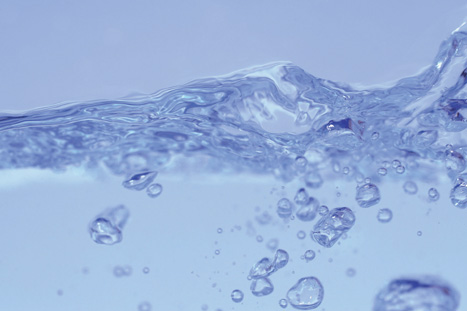
The breakthrough at Manchester University’s National Graphene Institute is reported in Nature.
The tuneable membranes have allowed the precise control of water flow by using an electrical current. The membranes can also be used to completely block water from passing through when required.
The team, led by Prof Rahul Nair, embedded conductive filaments within the electrically insulating graphene oxide membrane. An electric current passed through these nano-filaments created a large electric field which ionises the water molecules and controls the water transport through the graphene capillaries in the membrane.
Prof Nair said: “This new research allows us to precisely control water permeation, from ultrafast permeation to complete blocking. Our work opens up an avenue for further developing smart membrane technologies.
“Developing smart membranes that allow precise and reversible control of molecular permeation using external stimuli would be of intense interest for many areas of science; from physics and chemistry, to life-sciences. “
Achieving electrical control of water flow through membranes is said to be a step change because of its similarity to several biological processes where the main stimuli are electrical signals. Controlled water transport is key for renal water conservation, regulation of body temperature and digestion. The reported electrical control of water could help in the development of artificial biological systems and advanced nanofluidic devices for various applications.
Currently, adjustable membranes are limited to the modulation of wetting of the membranes and controlled ion transport, but not the controlled mass flow of water.
Dr Kai-Ge Zhou, lead author for the research paper said: “The reported graphene smart membrane technology is not just limited to controlling the water flow. The same membrane can be used as a smart adsorbent or sponge. Water adsorbed on the membrane can be preserved in the membrane even in desert conditions if a current is applied. We could release this water on demand by switching the current off.”
Dr Vasu, second lead author commented: “Our work not only opens new applications for graphene membranes but it allows us to understand the effect of electrical field on the nanoscale properties of confined water. Despite many conflicting theoretical predictions ranging from freezing of water molecules to melting of ice under an electric field, the experimental evidence for electric field effects were missing. Our work shows that large electric field can ionise water into its constituent ions.”
The work was done in collaboration with scientists from York University, Shahid Rajaee Teacher Training University, Iran, and the University of Antwerpen, Belgium.





Red Bull makes hydrogen fuel cell play with AVL
Surely EVs are the best solution for motor sports and for weight / performance dispense with the battery altogether by introducing paired conductors...